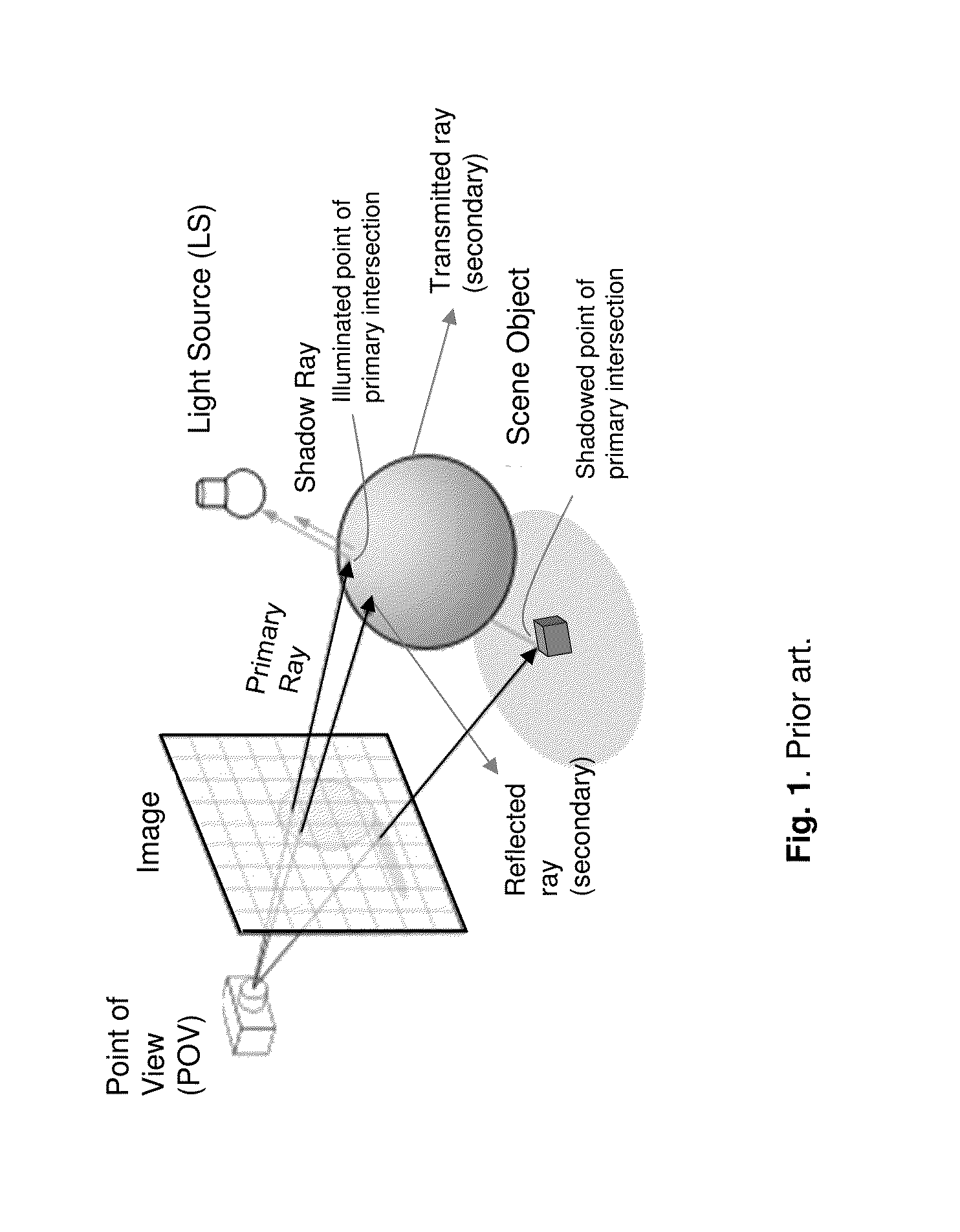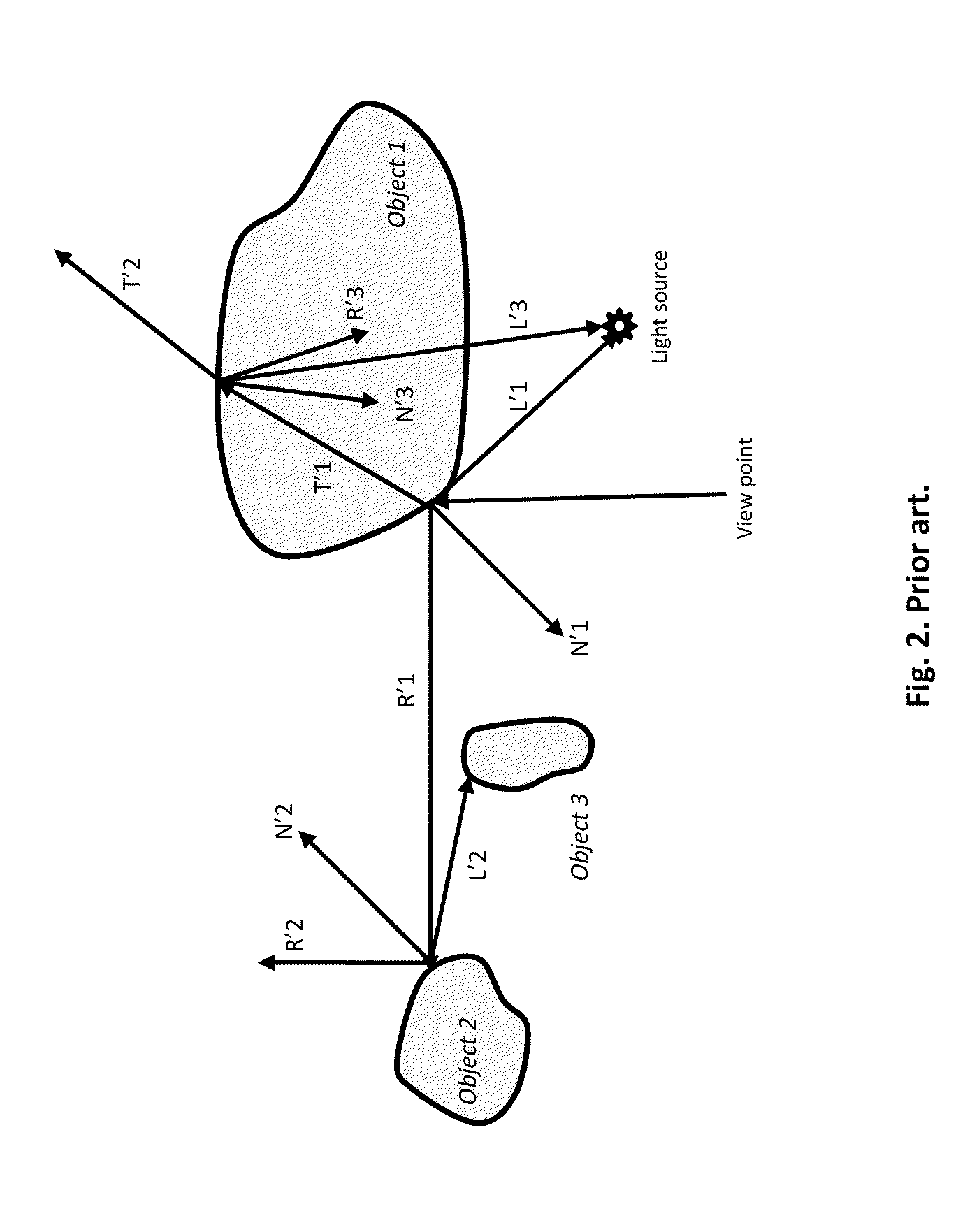Method and System for a Separated Shadowing in Ray Tracing
- Summary
- Abstract
- Description
- Claims
- Application Information
AI Technical Summary
Benefits of technology
Problems solved by technology
Method used
Image
Examples
Embodiment Construction
[0058]Unless specifically stated otherwise, as apparent from the following discussions, it is appreciated that throughout the specification discussions, utilizing terms such as “processing”, “computing”, “calculating”, “generating”, “creating” or the like, refer to the action and / or processes of a computer or computing system, or processor or similar electronic computing device, that manipulate and / or transform data represented as physical, such as electronic, quantities within the computing system's registers and / or memories into other data, similarly represented as physical quantities within the computing system's memories, registers or other such information storage, transmission or display devices.
[0059]Embodiments of the present invention may use terms such as processor, computer, apparatus, system, sub-system, module, processing element (PE), multicore, FPGA, GPU and device (in single or plural form) for performing the operations herein. This may be specially constructed for t...
PUM
 Login to View More
Login to View More Abstract
Description
Claims
Application Information
 Login to View More
Login to View More - R&D
- Intellectual Property
- Life Sciences
- Materials
- Tech Scout
- Unparalleled Data Quality
- Higher Quality Content
- 60% Fewer Hallucinations
Browse by: Latest US Patents, China's latest patents, Technical Efficacy Thesaurus, Application Domain, Technology Topic, Popular Technical Reports.
© 2025 PatSnap. All rights reserved.Legal|Privacy policy|Modern Slavery Act Transparency Statement|Sitemap|About US| Contact US: help@patsnap.com



